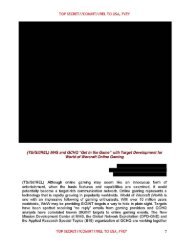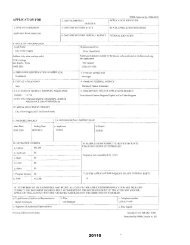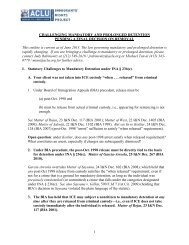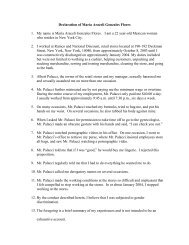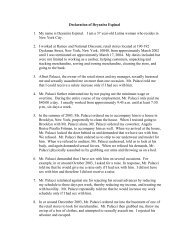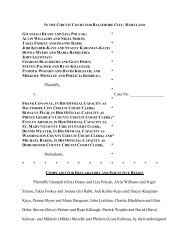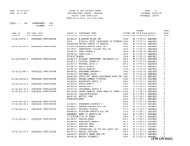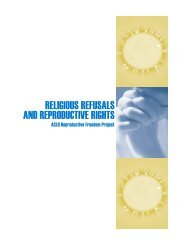NO. AP-75,363 IN THE COURT OF CRIMINAL APPEALS OF TEXAS ...
NO. AP-75,363 IN THE COURT OF CRIMINAL APPEALS OF TEXAS ...
NO. AP-75,363 IN THE COURT OF CRIMINAL APPEALS OF TEXAS ...
Create successful ePaper yourself
Turn your PDF publications into a flip-book with our unique Google optimized e-Paper software.
element of a greater offense.” Ring v. Arizona, 536 U.S. 584, 609 (2002) (internal<br />
223<br />
quotation marks omitted). In Ring, the Court held that statutory aggravating factors<br />
224<br />
making a defendant death eligible are elements of the charged capital offense. See also<br />
State v. Fortin, 843 A.2d 974, 1033-35 (N.J. 2004) (holding that New Jersey Constitution<br />
requires aggravating factors to be submitted to a grand jury in a capital case).<br />
This Court must remand this case for imposition of a life sentence because the<br />
State’s error in failing to obtain an indictment charging the special issues cannot be subject<br />
to harmless error analysis and, even if it can be, the State cannot prove the error harmless<br />
th<br />
beyond a reasonable doubt. See United States v. Resendiz-Ponce, 425 F.3d 729 (9 Cir.<br />
2005), rev’d on other grounds, __ U.S. __, 127 S. Ct. 782 (2007). Alternatively, this<br />
Court should remand to allow the State to attempt to obtain a grand jury indictment<br />
charging the requisite special issues. If the State were to obtain such an indictment, then<br />
the Appellant would be subject to another punishment trial.<br />
(f) The trial court committed reversible error by charging the jury on special issue<br />
three (i.e., future dangerousness).<br />
The trial court committed reversible error by overruling Appellant’s objection to<br />
charging the jury that it had to find beyond a reasonable doubt a “reasonable probability<br />
that the defendant would commit criminal acts of violence that would constitute a threat to<br />
society.” TEX. CODE CRIM. PROC. Art. 37.0711 (3)(b)(2). See (1 CR 250-63; 6 CR 117-20;<br />
223<br />
Because of Ring, federal courts now agree that aggravating circumstances must be found by a grand jury under<br />
the Fifth Amendment. See, e.g., United States v. Allen, 406 F.3d 940, 943 (8th Cir. 2005) (en banc).<br />
224<br />
In Sattazahn v. Pennsylvania, 537 U.S. 101, 111 (2003), the Court ruled that “if the existence of any fact (other<br />
than a prior conviction) increases the maximum punishment that may be imposed on a defendant, that fact – no<br />
matter how the State labels it – constitutes an element, and must be found by a jury beyond a reasonable doubt.”<br />
135



